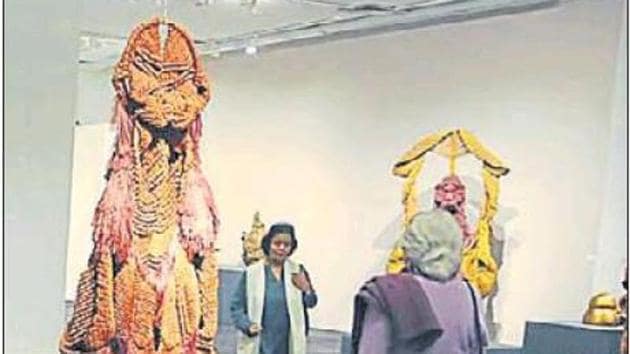Why can’t we hold our own against the world’s art markets?
Although attitude towards the humanities streams is changing, many things have held us back from stepping up to join the ranks of the more evolved art markets, says Arvind Vijaymohan .
Like most frequent fliers, I’ve perfected the art of falling into deep slumber within minutes of taxiing. On a recent long-haul, I was all set for Neverland when I felt a gentle tap on my leg -- in my somnolent stupor, I’d filed past an eminent European contemporary art collector, who had come over to say hello. We had met briefly on two prior instances, though we’d not had the opportunity to have a conversation on either occasion.

In the brief time before pushback, he asked, in the most polite tone possible, some of the most acerbic questions on the Contemporary Indian art scene. He had, over the previous year, visited a number of Indian cities, hungry to explore the Contemporary scene and was evidently familiar with our part of the world.
Despite being a vociferous art market advocate, I couldn’t really counter any of the points he made. His perspective about the uninspiring standard of a large swathe of Contemporary Indian art, the seeming absence of publicly accessible Contemporary collections and the low financial weight within this category -a far cry from the rich price points a decade back for the top Contemporaries -- rang true.
He mentioned some of his Indian business associates, members of the billionaire club, most of whom he rightly pegged down to be seeming content with a few trophies to cover their more visible public areas. He’d visited the state museums but couldn’t help note the general apathy towards matters concerning the support of this domain, including infrastructure, financial support for programming and educational initiatives.
The conversation left me perturbed. (Fair warning: What follows is part of a Jerry Maguire-esque note that I set about typing mid-air).
What has held us back from stepping up to join the ranks of the more evidently evolved art markets?
Growing up in the 1980s, I distinctly recall telling a friend of my parents about my choice to pursue history in high school because it was my favourite subject. His reaction suggested I’d told him I was about to saw off my leg to trade it for a wooden stump in order to intern on a pirate ship.
At the time, the overwhelmingly resident mindset held that the humanities stream was reserved for the dregs of society -- the good-fornothings who could not qualify for anything worthy such as engineering, medicine or chartered accountancy. There was a certain disdain in how it was described as “Arts”.
Tracing my steps back to a few years before that, the arts program in primary school was a caricature. If most of the “serious” subjects were driven via the mind-numbing rote route, the art class was a further dumbed down, mentally stifling paint-by-numbers exercise for someone perhaps with an IQ of below 12.
At an age when our creative flourish was at its brightest, we were asked to colour within the box and would get rapped on our knuckles for depicting the sun in any other shade but a bright yellow. I still have some scars to prove it.
A solitary field visit to the state art museum, for those privileged enough to be residents of Delhi or Mumbai, was viewed a torturous exercise, usually more so by the teachers leading the trip than the students.
The art curriculum in schools has certainly improved, as has the general perspective towards the humanities stream -- but we have a long mile to cover in making sure we are raising culturally sensitive children, who we push equally towards following the life story of Vasudeo Gaitonde as we do Virat Kohli’s.
(Arvind Vijaymohan is the CEO of Artery India, a financial datacenter focused on Indian art sales globally.)




